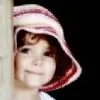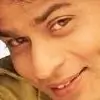Remembering Ustad Bismillah Khan who died two- year ago on August 21
By Shivnath Jha
Bismillah:The Beginning Foundation
In the last half a century or more, no one could think of Shehnai without Ustad Bismillah Khan or vice-versa. It is he, who, in fact, gave a popular instrument the capacity and courage to rise to be admitted to the hoary company instruments of Hisndustani classical music globally.
A humble man, he believed that musicians were supposed to be heard and not seen. For him, the Shehnai was his "begum" and he had made this a known fact after the death of his wife almost 16 years back. But his begum was not there at his bed side when he breathed his last at the Heritage Hospital in the wee hours of August 21, after struggling for life for more than 96 hours, exactly five months after when he had celebrated his 91st birthday after cutting a 91 kg cake.
He died of cardiac arrest. The government announced a one-day national mourning in honour of the legend who had the rare distinction of playing the Shehnai as the Indian flag was unfurled at the historic Red Fort in New Delhi to mark the country's independence from Britain on August 15, 1947. He died without his Shehnai.
But he indeed wanted his Shehnai to be kept next to him. On August 18, when I along with my wife Neena and my nine-year-old son Aakash visited him at about 10 in the morning and enquired about his "begum", the maestro with tears in his eyes said: Begum ghar par hain, mein yahan akela hun…"
The legendary Ustad was born on 21 March 1916. His ancestors were court musicians in the princely state of Dumraon in Bihar and he was trained under his maternal uncle, the late Ali Bux "Vilayatu". He spent his child hood in the holy city of Varanasi, on the bank of the Ganga, where his maternal uncle was the official Shehnai player in the famous Vishwanath temple.
It was due to this that Bismillah Khan became interested in playing the Shehnai. At an early age, he familiarized himself with various forms of the music of Uttar Pradesh, such as thumri, chaiti, swanti etc. Later he studied Khayal music and mastered a large number of ragas.
For the Ustad, music, sur and namaz were the same thing. His namaz was the seventh suddh and five komal surs. Even as devout Shia, Khan Sahib was a staunch devotee of Saraswati, the hindu goddess of music.
For the man who took the Shehnai out of the wedding processions and naubat-khaanaas - as he brought it to the centre-stage of classical respectability, his instrument was also his Quran. Where others see conflicts and contradictions between music and religion, he saw only a divine unity.
Once Ustad had said "We reach Allah in different ways. A musician can learn. He can play beautifully. But unless he can mix his music with religion, unless he strives to meet God, he will only have kalaa (art) but no assar (mystical union). He will always stand at the ocean and never reach the heights of purity."
During the compilation of a book -Monograph on Ustad Bismillah Khan - we met several times and spent several hours with him, his family members at his house and also on the bank of the river Ganga. He had a strong feeling and regard for the people, especially the women of Mithila (north Bihar) region.
On January 26, 2006 when we met him to show the ornamental issue of the monograph (brought out to financially protect the musicians and artists) he said; "Alham Dullillah (Allah at last inspired you to accomplish a good work.)" and asked our son to give a pen. Then he wrote: 'Alham Dullillah, Bismillah Khan" and asked us to publish it on the cover page of the monograph.
Bismillah Khan had played his shehnai in Afghanistan. Europe, Iran, Iraq, Canada, USA, USSR, Japan, Hong Kong and almost every capital city across the world. The Government of India bestowed on him the title Padmashri, Padma Bhushan, Padma Vibhushan and Bharat Ratna for promotion of shehnai globally. He though felt that he had barely reached the shore after 91 years and his search was still incomplete.
On March 25, 2006 for the first time, he had celebrated his birthday with such fanfare four days after his actual birthday due to serial blasts in Benaras. He had then said "Meri antim khwahish aap log pura karen. Mujhe India Gate par bajana hai. India Gate hamara hai. Jab India Gate par Bismillah Khan ki Shehnai bajegi to puri Dilli ruk jayegi. (You will fulfill my last wish of performing at India Gate where Bismillah Khan will play Shehnai and the whole Delhi will stop to listen)."
A month later, we got the permission of the Government of India and went to his place to invite him. By that time he had fallen ill. We had to extend the date from July 15 to August 9, 2006. But he was still unwell. When we reached Heritage hospital on August 18, he inquired about the programme and said: "Thora kamzor ho gaya hun….dekho in logon ney kya kar diya hai…..mein jald theek ho jata hun phir tumharey sath Dilli chalunga aur India Gate par shehnai bajaunga. (I have become weak…see what these people have done…I will get well and will accompany you to India Gate.)" Alas!
Until Ustad Bismillah Khan burst upon the center-stage of Indian music with his strange little instrument at the All-India Music Conference in Calcutta in 1937 at the age of 20, the Shehnai was considered an instrument reserved for wedding processions or Hindu religious rituals.
"I was never interested in studies. While others were at their books. I used to sneak out and play marbles or blow on Mamu's shehnai. He always knew I would be a Shehnai-player," the Ustad had said.
Many people say Bismillah Khan did not groom a disciple although he taught students when he had the time but there was no special heir. But, of his six sons (Mehtab, Nayyar. Hussein, Famin, Kazim, and Nazim) Mehtab and Nayyar play good shehnai. It may be mentioned that when Ustad Bismillah Khan played shehnai with his elder brother Samsuddin Khan, he always played down his own part as he did not wish to overshadow his brother. "Even though I have the ability, I must always remember that he is my elder brother," he had said with humility and modesty.
On August 19. when I inquired who will continue the tradition of shehnai, Ustad smiled lying on his hospital bed and said: "Mehtab aur Nayyar bahut achcha bajatey hain…… riyaaz karna hoga…. dam aur shudh dono sadhna hoga…… Insha Allah. (Mehtab and Nayyar play very well… they must do practice…breath and purity has to be attained… Inshallah)."
To promote his secular philosophy, we have launched a nationwide movement "Andolan Ek Pustak Se" under the aegis of Bismillah:The Beginning Foundation by publishing books one after another to protect those who have brought laurels and pride to the Independent India. We have rehabilitated Vinayak Rao Tope, the third generation of the front line leader of 1857 Uprising Tatya Tope who were living in anonymity in Bithoor village, about 20 kms from India's industrial city Kanpur. The rehabilitation of Sultana Begum, the grate grand daughter-in-law of the last Mughal emperor Bahadur Shah Zafar is on card.
We pray Ustad Bismillah Khan's legacy lives on.























